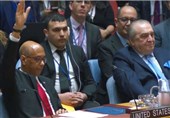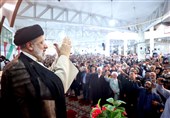Research to Explain Why Actions Speak Louder Than Words
TEHRAN (Tasnim) - An innovative series of experiments could help to unlock the mysteries of how the brain makes sense of the hustle and bustle of human activity we see around us every day.
Very little is known about the psychological processes which enable us to pick out a potential mugger from a busy street or to spot an old friend approaching us across a crowded room. Such judgments of social intention, which we make countless times each day, enable us to respond in appropriate ways to the dynamic and complex world around us.
George Mather, Professor of Vision Science at the University of Lincoln, UK, and one of the world's foremost experts on human visual perception, will lead a new research project investigating the mechanisms behind this crucial ability to perceive and interpret the intentions of other people from the way they move.
Numerous experiments have explored the way we use visual signals to extract meaning from our environment, but most have been based on static images, such as photos of different facial expressions. Other studies into the perception of moving images have relied on very simple animated scenes, like moving patterns of regularly-spaced lines or random dots, devoid of the richness and nuances of scenes from the 'real world'.
There remains limited scientific understanding of how the human visual system makes sense of the flurry of movement we see around us in modern societies: for example, whether a person approaching us is sprinting or strolling, whether that means they are angry or calm, and how we should react in response.
Professor Mather aims to bridge this gap in the academic literature through a series of world-first experiments. The aim is to shed new light on the process by which the human visual system identifies and decodes 'dynamic cues of social intention'.
"It's true that actions speak louder than words. Perception of movement is fundamental to many of our everyday social interactions. But simply judging speed is in itself a very complex task. When you see somebody walking across your field of view, how do you know how fast they are going? That information can be very useful because it might tell you something about their intentions but it's surprisingly difficult to make an accurate judgment. A basic problem is that the further away a moving object is, the slower it moves in the image received by the eye. We don't really understand at the moment how the human visual system is able to compensate for different viewing conditions," Mather said.





